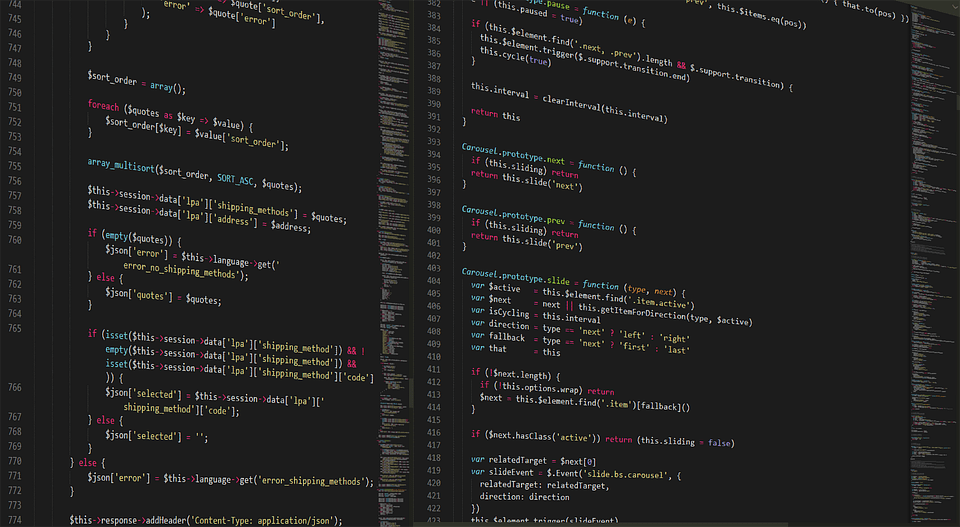Because of the quick progress of technology, many companies would have to keep up with the latest tech, which can give them great marketing platforms to improve the popularity of their brand. One of the aspects of technology that are closely kept an eye on by businesses is the cross-platform framework, which is a complex platform that is constantly changing, updating, and evolving.
The cross-platform framework is basically a set of tools that will help you in app development, which means that you can utilize it to make apps for different devices like iOS, Android, and Windows. Through the cross-platform framework, many brands have started releasing their own app that will make it easier for their customers to purchase products or services. So, it is safe to say that cross-platform frameworks are essential in making brands thrive.
There are dozens of different cross-platform frameworks that developers can utilize in 2021 and beyond, but there are only a few that are viewed to be the best when it comes to providing intuitive controls and better quality end-products. Here are the best and most popular cross-platform frameworks in 2021.
React Native
Despite being relatively new, React Native quickly rose to the top as one of the best cross-platform frameworks used by many developers today. React Native was launched in 2015 as Facebook’s own open-source cross-platform app development framework. This framework is based on the JavaScript library React, which was made in 2013 and is intended to be an open-source front-end library. You can read here to know more about React Native and how to create a custom tab bar on the framework.
What’s cool about React Native is that it uses CSS-like polyfills and JSX (JavaScript XML) instead of HTML, WebView, or CSS. So, editing and creating codes and programs can be quite easy through React Native. In addition, React Native primarily focuses on UI, so if a brand wants an app that is intuitive and has a great user interface, they should use this framework made by Facebook.
The biggest downside to React Native is that it is not really a cross-platform framework as its code does not work for all platforms. However, as many developers and companies are starting to discover React Native, this downside might disappear since it could be supported by all platforms in the near future.
NativeScript
Another popular cross-platform framework is NativeScript, which was released in 2015 as an open-source framework that is suitable for making Android and iOS apps. NativeScript is primarily utilized for developers to gain access to native Android and iOS APIs that would then allow them to render platform-native UI.
You can create and edit codes through JavaScript on NativeScript, but you can also use TypeScript, Angular, and Vue.js. Because of its flexibility, NativeScript is used by many developers that have different specialties, but this framework is primarily used by those that are more familiar with JavaScript.
The drawback of using NativeScript is that the framework runs every code on a single thread, so this means that the program or app may run slower as it takes longer to process information. However, the speed wouldn’t matter if the brand just wants to make a simpler app that doesn’t have too many graphics, videos, and other moving objects within several pages of the app.
Ionic
Ionic is another open-source framework that features a flexible platform that allows developers to use HTML, CSS, and JavaScript for making apps. This framework primarily uses a SaaS (Software as a Service) UI and has foundations based on Cordova. Through Cordova and Capacitor plugins, Ionic is able to have access to native operating system features, such as the device’s camera, flashlight, GPS, and more.
An interesting feature that Ionic has is that it has its own IDE (integrated development environment) called Ionic Studio that allows developers to use Ionic’s great tools like lazy loading, code deploys, and automated builds. In addition, Ionic is also compatible with Angular, Vue, and React frameworks, so you can combine their features to make the best app possible.
A negative aspect of Ionic that you should know about is that it is highly dependent on plugins, so you may need to be knowledgeable in native and compatible plugins for you to use this framework to its maximum potential.
Xamarin
Xamarin is an open-source cross-platform framework that was developed independently and released in 2011. Microsoft would then acquire the rights to own the framework in 2016, and the said company added some improvement on Xamarin that made it one of the best cross-platform frameworks.
Although Xamarin has the same structure as most cross-platform frameworks, it has a few features and characteristics that make it unique. One of these features is Xamarin.Forms, which allows the framework to develop platform-specific UI elements that will look the same on different operating systems. Moreover, Xamarin also has a “Write Once, Run Anywhere” feature that enables 90% of the code written on the framework to be readable on almost all platforms.
Despite having great features, Xamarin still has some cons. One of the cons is its limited access to open source libraries, as it is not compatible with some of them. In addition, if a business wants to use Xamarin, they may need to purchase a license for Visual Studio by Microsoft.
These are the most popular cross-platform frameworks that brands or companies can utilize in 2021. The weight of the pros and cons of these frameworks would depend on what the business needs, so it is important to take a closer look at each of these frameworks to know if their features are suitable for the app that the business aims to create.

